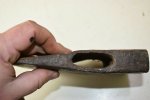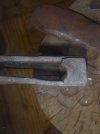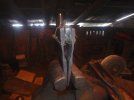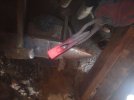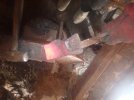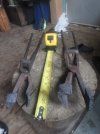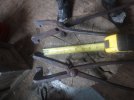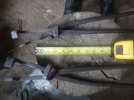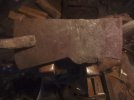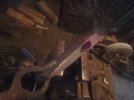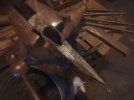With a fair certainty i think i can say this:
Them axes are quite old,anywhere from 500 to 1500 years or so.
They're made very well,it took quite a skill and not a shabby tool-set to do this.
The iron was quite good quality to begin with,it was made carefully and well in small batches,and was refined very thoroughly(unlike the iron of that mortising axe above).
I'd not be surprised at all if they had a steel edge insert welded in that is heat-treated.
These are well-made tools of a culture that had their woodworking lined out,had nice trees around them and knew what to do with them
This is why it's so sad that these are deprived of their provenance.We'll never know if that bottom bearded job was a viking ship-carpenter's hatchet or a tribal take on one,hundreds of miles and years removed,or about anything else in between!
Them axes are quite old,anywhere from 500 to 1500 years or so.
They're made very well,it took quite a skill and not a shabby tool-set to do this.
The iron was quite good quality to begin with,it was made carefully and well in small batches,and was refined very thoroughly(unlike the iron of that mortising axe above).
I'd not be surprised at all if they had a steel edge insert welded in that is heat-treated.
These are well-made tools of a culture that had their woodworking lined out,had nice trees around them and knew what to do with them
This is why it's so sad that these are deprived of their provenance.We'll never know if that bottom bearded job was a viking ship-carpenter's hatchet or a tribal take on one,hundreds of miles and years removed,or about anything else in between!









